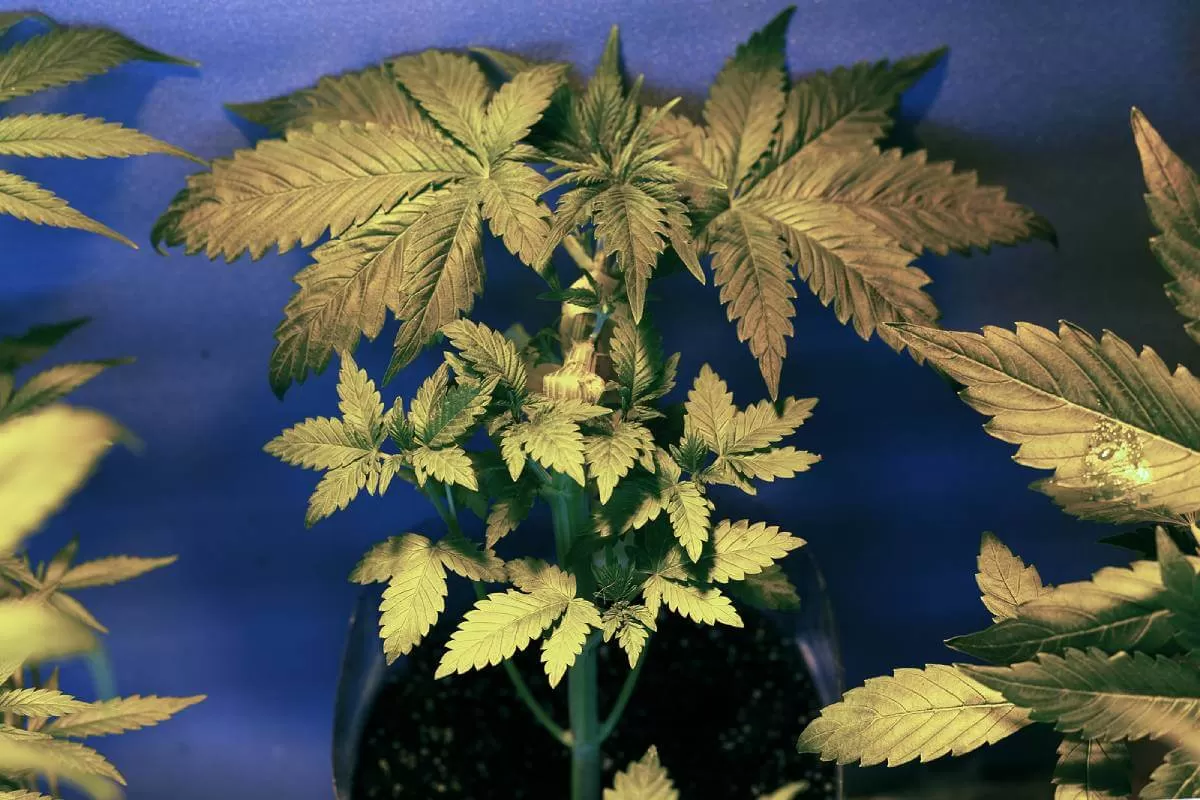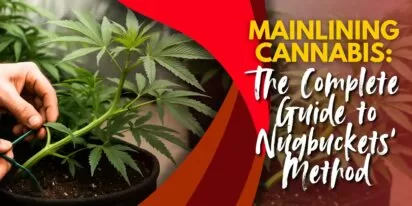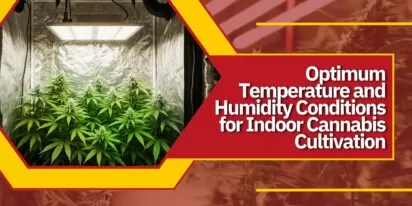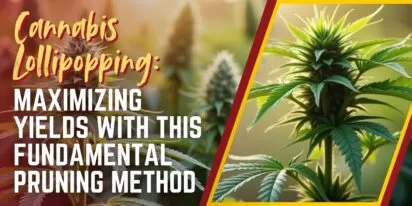To practice a more convenient and practical way of cultivating marijuana, there are a lot of ways research and science have come up. Not only do these make the experience more comfortable, but they also help cut the long-time frame, making it easier and faster to grow and harvest marijuana. Perhaps, each grower already encountered and heard about autoflower seeds and strains. Almost all seed catalogs from different seed distributors offer this kind of seed. But what exactly is an autoflower strain? Getting to know how to grow an autoflower may change a grower’s marijuana game.
Growing autoflower strain is slightly different from growing the traditional marijuana plant. It has its advantages, and perhaps the biggest one is; it takes a shorter time for autoflower to cultivate, and in a span of two to three months, autoflowers are ready to harvest. Compared to traditional strains, autoflower plants also last shorter. Yet, some new growers and breeders continue to grow autoflower strains and study their components and yields. Because of this, there are more autoflower strains available that give better yields, higher potency, and a dependable variation regarding the harvest time, growth pace, and the plants’ sizes.
What is an autoflower strain?
Autoflower is from the process of crossing cannabis ruderalis with the main strains, Indica and Sativa. The Cannabis ruderalis is a marijuana plant subspecies that is identified for its autoflowering characteristics and short size. The crossing results in a variety of plants that don’t depend on photoperiods but willingly blossoms and flowers on its time frame.
Thus, the central idea of autoflower strains is the time frame of a growing plant. There is no need to set a definite time for life stages, as well as the timed light. On its own, the plant grows and flowers even with the unusual sunlight or light and spends the vegetative stage in two to four weeks.
Cultivating a kind of marijuana strain that would allow the grower to have a yield at a shorter time sounds like a good idea. Aside from this, there is no need to check the amount of light the plant gets constantly. The strain boasts of faster growth and can grow bigger buds even in lesser time compared to any traditional plant. Since they are also smaller, they are best when grown indoors with little space for plants. On the other hand, there are also drawbacks. Since the plant doesn’t grow tall and wide, the yield isn’t as large as the traditional ones. It is also difficult to train it for increased growth and yields. But since the improvements made from this strain and the hundreds of varieties sold, the autoflower strain is worth a try.
Steps and tips on how to grow autoflower strains
Just like planting traditional strains, autoflower plants also need preparation and essential steps to make sure the best yield is produced to make the most out of it.
The first step is training your plant. Though this may be quite difficult because of the time frame, it doesn’t mean it’s not possible. Since the vegetative time phase only lasts from two to three weeks, the grower only has that time to train the plants. Once the autoflower develops three or more nodes, it is suitable to start topping the plants to create more stems and nodes. Another way is to pull the plant on the sides to let the new upwards increase. Pruning also works fine a week after the flowering stage. However, when it starts flowering, topping the plant should stop.
Though the plants don’t need the necessary sunlight or light, there are some other things they need. Autoflower plants still need warmth and good airflow. When growing outdoors, the rainy climate might be harmful to the marijuana roots. Thus, this is best planted indoors or inside a greenhouse where the necessary protection and growth can take place.
Since autoflowers have shorter lengths and vegetative cycles, there is no need to overfeed them with organic nutrients and nitrogen; overfeeding does more harm than good. The best time to feed them is during the vegetative stage. One trick to also do is to harvest the yield progressively. Start from harvesting the colas, then let the lower buds solid up before harvesting them. This way, there will be more harvest since one can get the most out of these small plants.
For continuous growth and harvest, it is also possible to plant more seeds while the current autoflower plant is ready to harvest. It would be easy to keep up with the growing and harvesting part since they don’t take that long. That way, the growers can have ready-to-harvest plants and growing plants simultaneously. This means more yields and more ways to observe and cultivate autoflower plants.
There are also added tips to get the best advantages when planting autoflower plants
One tip is to choose the right autoflower strains. Since there are many strains available in the market, picking the best one will make all the difference; read the labels and the characteristics of the strain. This is also one way of knowing how to grow the autoflower plants, for some are easier to handle and could essentially grow faster than the others. Pick the kind of strain that works well for personal preference.
Repotting the plant may not be a good idea since it will just make a mess or stress the autoflower plants. A large pot is good to allow the roots more space, but avoid using too large pots since, again, the plants don’t grow very tall.
The best soil to use is the kind that is light and airy. Make sure the purchased soil doesn’t contain heavy nutrients; choose the one that has a lighter dosage of fertilizer mix. If there are no lighter mixtures available, the growers can make their own solution at home.
It is also very important to water the autoflowering plants correctly. To do this, avoid scheduling the plant’s watering at a fixed time, but rather, water it when needed only. Just like traditional plants, make sure to check if the topsoil is dry; water it if it is dry. If it is still damp, consider watering it later. When watering, don’t use too much water. Spraying is enough for the soil to get damp, and the plant is good to go.
Since it is not good to overfeed the autoflower plants with nutrients, it is essential to know when to feed them. If the soil is filled with nutrients, it is possible not to feed them with other organic nutrients anymore since the soil is enough for the plant already. But if the grower wants to give it more for a better-quality plant, make sure that the plant won’t be fed with nutrients for at least two weeks after sprouting the first few leaves. After that, it’s okay to slowly give them a few nutrients they need.
In the last one or two weeks, just before the harvest, consider flushing the autoflower plants. It means to stop giving the plant any kinds of nutrients. Use water to gently get rid of any remaining chemicals and nutrients. This may cause leaves to run yellow, but that is normal. Flushing will let the buds taste pure and better instead of tasting chemicals on the smoke. Thus, flushing the plant is always essential.
Autoflower VS Traditional Strains
1. Harvest and Yield
Autoflowering plants are ready to harvest in two to three months, while the photoperiod or traditional strains are ready to harvest in three to four months or more, depending on the strain and growth style.
When it comes to yields, the autoflower strain will generally give more or less four ounces of bud to each plant but could get a lesser amount when problems occur. There are also expert autoflower growers who can yield up to six ounces per plant. The photoperiod, as known, creates and gives more yield since the grower has full control over the sizes of the plant.
2.Potency and Plant Visuals
Though autoflower plants are not less potent, they usually have a higher amount of CBD or cannabinoid, which is best for those who use medical marijuana. Both autoflower and photoperiod mostly have the same taste, smell, and even looks. Autoflower plants just tend to produce more leaves than photoperiod plants.
Conclusion
Growing autoflower marijuana plants is mostly the same as growing traditional or photoperiod strains. It still needs the right care, soil, nutrients, water, and climate to produce a good quality yield. Autoflower strains also offer their best advantages, such as lesser growth time and shorter plants suitable for small space growing areas. Though the downside is a lesser amount of yield than usual, it is still not a losing end. This is best when the grower wants to have a multitude of harvests, or even monthly harvest all year round.
Learning how to grow autoflower marijuana plants is easy and convenient. There are just a few reminders to keep the plants healthy in order to make it a successful growing experience. With the constant Autoflower marijuana improvements and research, the strain has come a long way since it was introduced years ago. With the hundred strains available, a grower looking for any challenges and adventure will never get out of options.
















2 Responses
What would the lighting schedule be for auto flower plants
It doesn’t matter much, but ive done 12 on 12 off and also 18 on and6 off, 18-6 will give a better yield. Once you see a few buds, give them a little potassium and phosphorus.